In a world where robots can flip burgers and AI can write your emails, it’s no surprise that technology-driven unemployment is becoming a hot topic. As machines take over tasks once performed by humans, many are left wondering: is it time to panic or to adapt? It turns out, the future of work might look more like a sci-fi movie than a traditional office setting.
Table of Contents
ToggleUnderstanding Technology-Driven Unemployment
Technology-driven unemployment occurs when advancements in machines and artificial intelligence lead to job displacement. Workers in various sectors face challenges from automation that can perform tasks faster and more efficiently. Manufacturing jobs highlight this shift; robots increasingly replace manual laborers on assembly lines, leading to significant job losses.
In addition to manufacturing, retail also experiences upheaval. Self-checkout kiosks and online shopping platforms reduce the need for cashiers and store staff. Data from the Bureau of Labor Statistics shows that retail employment has declined by over 300,000 positions since 2017 due to technology.
Healthcare is not exempt from this trend either. AI assists with diagnostics and administrative tasks, allowing healthcare professionals to focus on patient care. Automated systems in hospitals manage scheduling and billing, impacting jobs that support these functions.
The gig economy illustrates another dimension of this issue. While some find flexible employment opportunities, others face uncertainty as traditional jobs disappear. Freelance work often provides income, but this income can be unreliable and inconsistent compared to full-time positions.
Policy responses must address technology-driven unemployment. Governments can support workforce retraining programs to help displaced workers acquire new skills. Incentives for businesses that invest in employee development may also play a role.
Ultimately, society faces a choice—to panic over job losses or adapt to evolving technology. While innovation presents obstacles, it also creates new opportunities for growth and development in emerging industries.
Causes of Technology-Driven Unemployment
Technology-driven unemployment stems from several critical factors that reshape the job landscape. Understanding these causes reveals the depth of this issue.
Automation and Robotics
Automation significantly affects various industries. Many manufacturing jobs experience displacement as robots handle tasks previously executed by humans. Robotics reduces the need for manual labor on assembly lines, resulting in fewer positions available. A report from the World Economic Forum states that automation could displace over 75 million jobs by 2025 while creating 133 million new roles. The retail sector faces a similar fate, with self-checkout kiosks and automated inventory systems lowering the demand for cashiers and stock clerks. Ultimately, automation pushes workers toward roles that require more advanced skills.
Artificial Intelligence
Artificial intelligence causes major shifts in employment dynamics across sectors. In healthcare, AI supports diagnostics and streamlines administrative processes, affecting jobs traditionally filled by assistants and clerks. According to McKinsey, up to 30% of jobs could be automated by 2030 due to AI integration. The customer service industry also feels the impact, as chatbots and virtual assistants replace human representatives. Businesses benefit from AI’s efficiency, yet this leads to increased unemployment for individuals without specialized skill sets. As AI technology advances, its role in job displacement grows more pronounced, highlighting the urgent need for workforce adaptation.
Impact on Job Markets
Technology-driven unemployment significantly alters job markets across various sectors. AI and robotics reshape workforce dynamics, creating a ripple effect in numerous industries.
Affected Industries
Manufacturing is among the most impacted fields, with robots replacing manual tasks on assembly lines. Furthermore, the retail industry feels the strain, as self-checkout kiosks minimize the need for cashiers. Reports indicate over 300,000 retail positions disappeared since 2017 due to automation. Healthcare jobs also face disruption; AI enhances diagnostics and administrative tasks, affecting support positions. Estimates suggest that up to 30% of jobs could be automated by 2030, extending to roles in customer service as chatbots and virtual assistants emerge.
Skill Gaps and Workforce Displacement
Worker displacement results from rapid technological advances, creating skill gaps in the labor market. Many employees lack the necessary training to transition into new roles, exacerbating unemployment rates. Without adequate retraining programs, individuals may find it challenging to adapt to evolving job requirements. Employers need to emphasize upskilling and reskilling initiatives as technology reshapes their workforce. Additionally, workers must enhance their skill sets to remain competitive in increasingly automated environments.
Solutions and Mitigation Strategies
Addressing technology-driven unemployment requires targeted strategies. These solutions focus on adapting the workforce to technological changes.
Reskilling and Upskilling Programs
Reskilling and upskilling programs play a crucial role in workforce adaptation. Companies should create initiatives to train employees in new technologies, enhancing their skill sets. Effective programs equip workers with skills demanded by emerging roles, such as data analysis and digital marketing. Investment in these programs can lead to better job retention rates, allowing individuals to transition smoothly into new positions. A commitment from employers to provide ongoing education fosters a culture of learning, encouraging workforce resilience against automation.
Policy Recommendations
Policy recommendations must prioritize workforce development to combat technology-driven unemployment. Governments should implement incentives for businesses that invest in employee training. Financial support for retraining programs can help displaced workers regain employment opportunities in new sectors. Policymakers must also focus on creating infrastructure that connects employees with training resources. Collaboration between industry stakeholders can enhance the effectiveness of these initiatives, ensuring access to innovative skills training tailored to market needs.
Future Outlook on Technology-Driven Unemployment
Anticipating the impact of technology on employment is crucial. It’s projected that by 2025, automation might displace over 75 million jobs according to the World Economic Forum. During the same timeframe, the creation of 133 million new roles is expected, balancing the job market yet highlighting significant shifts.
Manufacturing sectors will continue to face challenges, as automation replaces manual laborers on assembly lines. The retail landscape isn’t immune either, with over 300,000 retail positions lost since 2017 due to self-checkout kiosks and automated systems. Expect further declines in traditional roles as technology evolves.
AI integration in healthcare exemplifies another area at risk. Jobs supporting diagnostics and administrative functions could see reductions as automation becomes more prevalent. Up to 30% of other roles could also face automation by 2030, according to McKinsey, particularly in customer service environments utilizing chatbots.
Workers may find themselves facing a skills gap as technology rapidly advances. Reskilling and upskilling initiatives are critical for retention and transition into new positions. Employers need to invest in these programs to help their workforce adapt.
Navigating the gig economy offers flexible employment options, yet traditional jobs still vanish. Policies addressing technology-driven unemployment must prioritize workforce retraining programs and incentives for businesses investing in employee development.
Collaborating with industry stakeholders can create effective training resources. Favoring tailored solutions ensures that workers gain skills aligned with market needs. As innovations come forth, individuals and companies alike must adapt to the changing landscape, ultimately harnessing new opportunities while mitigating job losses.
Technology-driven unemployment is a complex issue that demands proactive solutions. As automation reshapes the job landscape, the focus should shift to reskilling and upskilling the workforce. Companies and policymakers must collaborate to create effective training programs that align with market needs.
Embracing innovation while addressing the challenges it brings can lead to a more adaptable workforce. By prioritizing employee development and fostering a culture of continuous learning, society can turn potential job losses into opportunities for growth. The future of work may be uncertain, but with the right strategies in place, it can also be promising.








